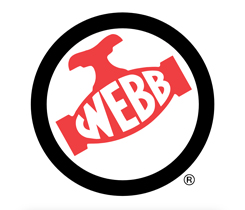Session offers propane industry insights into motor vehicle accidents
Del Lisk, vice president of safety services at Lytx Inc., explored the causes of motor vehicle accidents in the propane industry during an educational session at the Southeastern Convention & International Propane Expo in Nashville, Tennessee.
Lisk, whose San Diego-based company specializes in video fleet management and fleet safety services, offered a number of takeaways related to accidents involving propane motor vehicles. As an example, backing incidents represent almost one-third of all accidents involving propane vehicles based on data Lytx has collected.
Also, Lytx determined that higher-frequency incidents, such as those related to backing up, are generally lower cost to businesses. Low-frequency incidents, such as rollovers and other types, typically cost propane companies more money.
Still, additional Lytx data related to backing incidents reveals that 100 percent of drivers backed too far; 80 percent involved backing and turning; and 55 percent were “blindside” turning.
A number of drivers backing up continue to do so when they don’t know their surroundings, Lisk adds. A simple solution is to exit the vehicle and look at potential obstacles so drivers are best prepared to back up.
“When possible, position so you can back straight into the backing,” Lisk says.
Lytx data on rear-end collisions offered some interesting takeaways, as well. For example, 100 percent of rear-end collisions occur in moderate to heavy traffic. Ninety percent occur in daylight and dry conditions, and 70 percent occur when the vehicle ahead was already stopped.
In addition, 70 percent of drivers in rear-end collisions look away from their forward view, and 60 percent are classified as distracted.
Lisk also revealed that few propane vehicle accidents involve use of a cellphone. Only 6 percent of industry accidents involve a cellphone, he says. Most crashes (14 percent) occur when drivers are moving at an unsafe speed, but moving at an unsafe speed doesn’t necessarily mean drivers are “speeding.”
“For the given conditions, they were going too fast,” Lisk says.
In terms of where the point of impact occurs on a propane vehicle in the event of an accident, 38 percent occur in the front; 34 percent in the rear; 14 percent to the left; 12 percent to the right; 1 percent to the top; and 1 percent to the underside.
A positive takeaway for the industry, however, is that most propane drivers handle the road reasonably and obey traffic laws, Lisk says.
Featured photo by Kevin Yanik
















